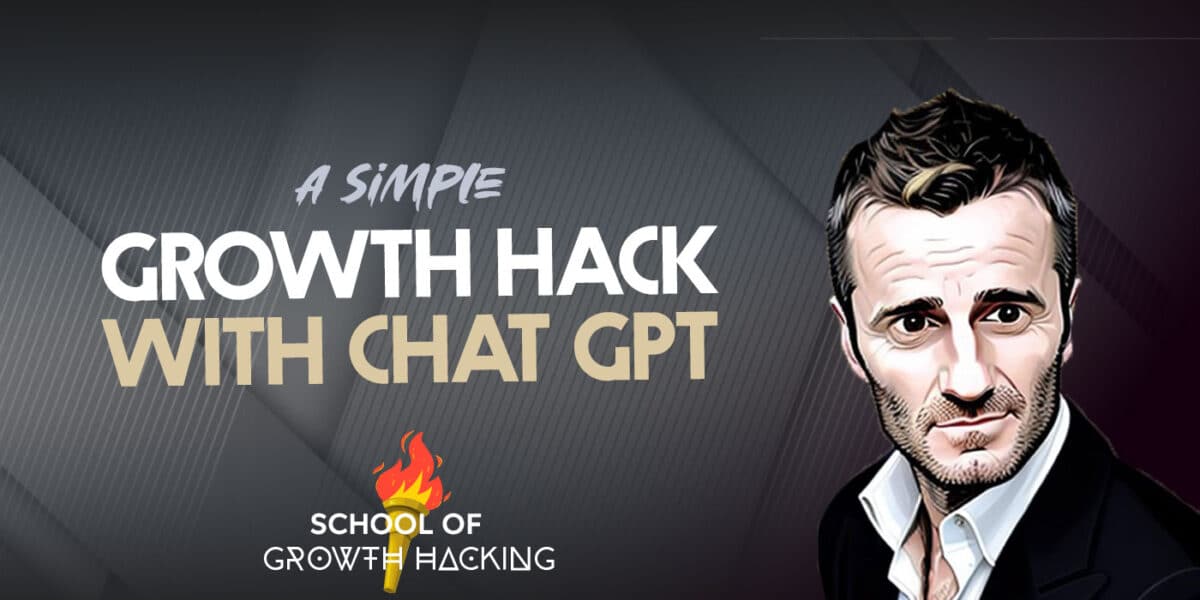Hello, everyone! Hope this finds you well, wherever you’re watching from today.
I’m typing this up from our beautiful remote work villa in central Nepal, looking out upon the lush rice fields softly framed by the morning sun and accentuated to the sounds of gentle birdsong.
It’s a fine morning to share a new growth hack that I just developed this week. So let’s get right into it…
All over the internet today you can easily find directory sites, lists of interviews, or perhaps a podcast page where you may see a long list of names who could be perfect for potential partnerships or collaborators.
In my 10x Growth Hacking course, I teach some easy but powerful ways to scrape data from different types of sites and export them into spreadsheets.
This week I looking to discover new people who become contributors to my book project and also help promote it. I had started writing a list of potential collaborators and wanted to reach out to new ones.
Then I remembered I was recently on an “AI Writing Summit” hosted by my friend Tom Morkes and though the other guest experts could fit this role perfectly. Here’s the process that I used, and this simple process can help you find influencers, affiliate partners, guest bloggers, or fellow authors.
One important thing to note is the type of URL structure that I look for. Often times when it comes to finding data, small changes in your queries can make the difference between results and falling flat in your efforts.
For example, if you wanted to scrape personal profiles from LinkedIn, you’d want to include the “/in” in your query to only get personal profiles.
You would want:
“https://linkedin.com/in/”
Not: “https://linkedin.com/” as this would return a bunch of irrelevant pages.
In this video, you’ll see the same process at work — being specific and precise always makes a big difference.
Here’s an outline of the process:
Browsing and Searching
Start by visiting a website or directory where potential collaborators are listed. For instance, I looked at the AI Writing Summit, where I had previously been interviewed. They had around 60 or 70 experts listed, perfect for my needs.
Collecting Names
You can’t always see contact information directly, but you can search for these people on social media. Let’s take an example: if you find someone named Anna Youngberg, search for her on Facebook. If you have mutual friends, it’s easier to connect.
Generating Contact Lists with Chat GPT
Here’s where Chat GPT comes in handy. I asked Chat GPT to take a list of names and generate the corresponding URL structures for Facebook searches. I provided the names and URL format, and within seconds, Chat GPT organized the data into a neat list with names, profile links, and their professional details. This saves a lot of time compared to manual searching and copying.
Crafting Personalized Outreach Messages
Once you have your list, you can start reaching out. I suggest sending friend requests first to ensure your messages don’t end up in the spam folder. When writing your messages, keep them friendly and conversational. Here’s a sample message template:
Hey there ! I noticed that we both hosted an information session during the recent AI writing summit hosted by Tom Morkes.
Tom is a good friend of mine and I would like to reach out to you about a new project that I am working on, a book called Unlimit. It’s basically an exciting new book about how to use a combination of AI and personal improvement to optimise your life for the fullest potential.
Would love to connect to see if we can feature some of your content and potentially host an interview for our community! If interested let know and I’ll send more details 🙂
Managing Your Outreach
Send out messages in small batches, maybe 10 at a time, and take breaks in between. This prevents your account from being flagged for spam and restricted where the messages don’t send. Over the course of a day, you can contact a significant portion of your list.
This method can help you to build a robust network of collaborators who can contribute to your projects and help promote them. It’s a simple, effective approach that doesn’t require extensive knowledge of AI or coding—just a bit of creativity and the right tools.
That’s it for today!
If you want more content like this, be sure to subscribe to our YouTube channel 😊🙏





